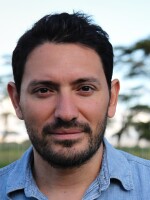Talk about a tease! Our friend Joe Palca reported some pretty big news today on Morning Edition.
The scientists working on the Mars Curiosity rover mission have found something "earthshaking," some data that is going "be one for the history books."
But John Grotzinger, the principal investigator for the rover mission, stopped there. He'll say nothing more until the rover conducts more tests to prove this wasn't a fluke.
It left us shaking our heads. But since you guys, our Two-Way readers, have been pretty smart on these kinds of mysteries — remember giant eyeball off Florida coast? — we'd thought we'd ask you about it.
What do you think the soil samples put inside SAM, the rover's Sample Analysis at Mars machine, found?
A good guess would be that the rover found some kind of organic compound, containing oxygen, nitrogen, sulphur or hydrogen, which SAM tests for.
For background on SAM, there's a great piece from Spectroscopy Now, which describes how SAM takes its measurements. Among the wow points: The onboard oven can "heat samples to 1000°C using maximum power of just 40 W."
Also something to remember before making your guess, SAM already sniffed the Martian atmosphere and found "little to no methane," an important precursor chemical for life.
Copyright 2020 NPR. To see more, visit https://www.npr.org. 9(MDAxODQzOTgwMDEyMTcyNjI4MTAxYWQyMw004))



